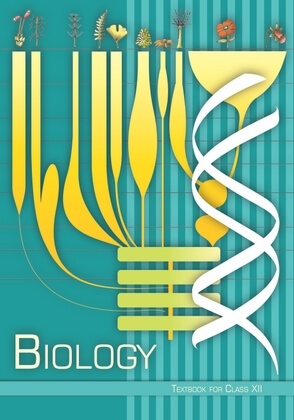NCERT Solutions Class 12 Biology Chapter 1 – Reproduction in Organisms

Q1. Why is reproduction essential for organisms?
Reproduction is essential for organisms as it enables the continuity of the species, generation after generation. Without reproduction, species cannot survive for long because individual organisms eventually die. Through reproduction, organisms give rise to offspring that grow, mature, and produce new offspring, ensuring the survival and propagation of the species over time. This biological process maintains the cycle of birth, growth, and death, effectively preserving life on earth. Additionally, reproduction allows for the creation of new variants, particularly in sexual reproduction, enhancing survival advantages for the species.
Q2. Which is a better mode of reproduction: sexual or asexual? Why?
Sexual reproduction is generally considered a better mode of reproduction because it enables the creation of new genetic variants, which enhances survival advantage for species. While asexual reproduction produces genetically identical offspring or clones, sexual reproduction introduces genetic variation, making offspring less susceptible to being wiped out by disease or changing environment. However, the statement that offspring formed due to sexual reproduction always have better chances of survival is not always true, as each mode of reproduction has its own advantages and trade-offs depending on environmental conditions and the organism’s specific survival strategies.
Q3. Why is the offspring formed by asexual reproduction referred to as clone?
The offspring formed by asexual reproduction are referred to as clones because they are morphologically and genetically identical to each other and the parent. A single parent gives rise to offspring without the involvement of gamete formation, leading to progeny that are exact copies of the parent.
Q4. Offspring formed due to sexual reproduction have better chances of survival. Why? Is this statement always true?
Offspring formed due to sexual reproduction generally have better chances of survival because:
- Genetic Variation: Sexual reproduction results in offspring that are genetically different from their parents and from each other. This leads to the creation of new variants, enhancing the survival advantage.
- Adaptation to Environment: Such genetic variations better equip the offspring to adapt to changing environments, increasing evolutionary fitness.
However, this statement is not always universally true as:
- Asexual reproduction can be advantageous under stable, favorable conditions where adaptation is not immediately necessary.
- Not always superior: Despite the advantages of genetic variation, the survival of species also depends on other factors such as environmental conditions, predation, and availability of resources.
Q5. How does the progeny formed from asexual reproduction differ from those formed by sexual reproduction?
The progeny formed from asexual reproduction are typically genetically identical to the parent organism and are called clones, meaning they display no genetic variation among themselves. In contrast, the progeny formed from sexual reproduction are genetically diverse and not identical to either parent due to the fusion of male and female gametes, which introduces genetic variation. This genetic diversity is a result of the recombination of genetic material during the formation of gametes. Consequently, offspring produced through sexual reproduction have potentially better chances of survival and adaptation to environmental changes compared to asexual progeny.
Q6. Distinguish between asexual and sexual reproduction. Why is vegetative reproduction also considered as a type of asexual reproduction?
Asexual Reproduction:
- Involves only one parent.
- Offspring are genetically identical to the parent, known as clones.
- No fusion of gametes occurs.
Sexual Reproduction:
- Involves the fusion of male and female gametes.
- Two parents may participate.
- Offspring are genetically diverse due to the mixing of genetic material.
Vegetative reproduction is considered a type of asexual reproduction because:
- It involves only one parent and does not involve gamete formation.
- The new plants arise from vegetative units like runners, rhizomes, and tubers, which are clones of the parent plant.
Q7. What is vegetative propagation? Give two suitable examples.
Vegetative propagation is a form of asexual reproduction in plants where new individuals are formed without the production of seeds or spores. Common examples of vegetative propagules include: 1. Eyes of potato - small buds that can give rise to new plants. 2. Rhizome of ginger - an underground stem that can produce new shoots and roots, leading to new plants. This enables plants to reproduce efficiently in suitable conditions.
Q8 (a). Define Juvenile phase
The Juvenile phase is defined as the period of growth that all organisms go through, reaching a stage of maturity before they can reproduce sexually. In plants, this phase is known as the vegetative phase. The duration of the juvenile phase varies across different organisms.
Q8 (b). Define Reproductive phase.
The reproductive phase is the period in an organism's life cycle during which it becomes capable of reproduction. In plants, this phase begins when they come to flower, marking the end of the juvenile or vegetative phase. Animals undergo morphological and physiological changes during this phase that lead to active reproductive behavior. The reproductive phase is of variable duration across different organisms and is regulated by hormonal and environmental interactions.
Q8 (c). Define Senescent phase.
The senescent phase is the last phase of an organism's life span, marked by the end of the reproductive phase and characterized by concomitant changes such as the slowing of metabolism. Old age ultimately leads to death.
Q9. Higher organisms have resorted to sexual reproduction in spite of its complexity. Why?
Higher organisms have resorted to sexual reproduction despite its complexity because this mode of reproduction enables the creation of new variants, which enhances survival advantages. Sexual reproduction results in offspring that are not identical to the parents or amongst themselves due to the fusion of male and female gametes. This genetic variation is crucial for adapting to changing environments and overcoming adverse conditions, especially for organisms with complex structures and long life spans. Such variation provides a better chance of survival over generations, giving an evolutionary edge to sexually reproducing organisms.
Q10. Explain why meiosis and gametogenesis are always interlinked?
Meiosis and gametogenesis are always interlinked because meiosis is essential for the formation of haploid gametes. In diploid organisms, specialized cells called meiocytes undergo meiosis, which reduces the chromosome number by half, resulting in the production of haploid gametes. This ensures that when fertilization occurs, the resulting zygote has the correct diploid number of chromosomes. In organisms with a diploid life cycle, meiosis is a crucial step to maintain the integrity of the species' chromosome number across generations.
Q11. Dentify each part in a flowering plant and write whether it is haploid (n) or diploid (2n).
(a) Ovary _____
(b) Anther ____
(c) Egg _______
(d) Pollen _____
(e) Male gamete ____
(f) Zygote ____
Here's the identification of each part in a flowering plant and its ploidy:
- (a) Ovary: Diploid (2n)
- (b) Anther: Diploid (2n)
- (c) Egg: Haploid (n)
- (d) Pollen: Haploid (n)
- (e) Male gamete: Haploid (n)
- (f) Zygote: Diploid (2n)
Q12. Define external fertilisation. Mention its disadvantages.
External fertilisation is a type of gametic fusion that occurs in the external medium (water), outside the body of the organism. This is common in aquatic organisms like algae, fish, and amphibians. Disadvantages of external fertilisation include:
- Offspring are highly vulnerable to predators since they develop outside the parent's body.
- A large number of gametes must be released to increase chances of successful fertilisation, leading to higher resource consumption.
Q13. Differentiate between a zoospore and a zygote.
A zoospore is a type of asexual reproductive structure that is typically found in some algae and fungi. It is a microscopic motile spore capable of movement, allowing it to spread and colonize new locations. A zygote, on the other hand, is the diploid cell resulting from the fusion of male and female gametes during sexual reproduction. This fusion event, known as syngamy, marks the beginning of the development of a new organism. While zoospores are products of asexual reproduction and are genetically identical to the parent organism, zygotes result from sexual reproduction and generate genetic variation in the offspring.
Q14. Differentiate between gametogenesis from embryogenesis.
Gametogenesis and Embryogenesis are distinct biological processes:
A. Gametogenesis:
- Refers to the formation of haploid gametes (sperm and egg).
- Involves meiosis which reduces the chromosome number by half.
- Results in the production of male and female gametes.
B. Embryogenesis:
- Begins after fertilization, involving the development of a zygote into an embryo.
- Involves mitosis, increasing the number of cells and differentiation.
- Leads to the formation of specialized tissues and organs.
Thus, while gametogenesis is about creating gametes, embryogenesis focuses on transforming the zygote into a developed organism.
Q 15. Describe the post-fertilisation changes in a flower.
Post-fertilisation changes in a flower involve several transformations:
- Zygote Formation: After fertilisation, the zygote forms within the ovule.
- Ovule Transformation: The ovules transform into seeds.
- Ovary Development: The ovary develops into a fruit with a protective thick wall known as the pericarp.
- Withering: The sepals, petals, and stamens typically wither and fall off, although in some plants, such as the sepals, they may remain attached.
- Seed Germination: Upon dispersal, and under favorable conditions, the seeds germinate to form new plants.
Q 16. What is a bisexual flower? Collect five bisexual flowers from your neighbourhood and with the help of your teacher find out their common and scientific names.
A bisexual flower is one that contains both male and female reproductive structures. Here is how you can proceed further:
- Collect Five Bisexual Flowers: Look around your neighborhood, including gardens, parks, or even the roadside.
- Note their Characteristics: Observe their petals, color, and any distinct features.
- Identify their Common Names: Ask your teacher or use a plant identification app to learn more.
- Find their Scientific Names: Consulting a botany book or database may be helpful.
- Examples: Common bisexual flowers include roses, lilies, and sunflowers (their detailed scientific names depend on the specific species).
Q 17. Examine a few flowers of any cucurbit plant and try to identify the staminate and pistillate flowers. Do you know any other plant that bears unisexual flowers?
- Staminate and Pistillate Flowers: The staminate flowers are the male flowers that bear stamens and produce pollen, while pistillate flowers are the female flowers that bear pistils and can develop into fruits.
- Other Plants with Unisexual Flowers: The text mentions that in flowering plants, unisexual male flowers are staminate, bearing stamens, while female flowers are pistillate, bearing pistils. Examples of plants that bear unisexual flowers include cucurbits (like squash and cucumbers), papaya, and date palm.
Q 18. Why are offspring of oviparous animals at a greater risk as compared to offspring of viviparous animals?
Offspring of oviparous animals are at greater risk compared to viviparous animals due to the following reasons:
- Lack of Protective Environment: Oviparous animals lay their eggs outside the body in the environment where they are exposed to predators.
- Reduced Parental Care: The eggs are often left to develop independently, without parental care.
- Environmental Vulnerability: The incubation relies on environmental conditions, which may vary, thus exposing the eggs to risks like temperature fluctuations or moisture changes. In contrast, viviparous animals have embryos developing inside the female body, thus providing constant protection and nourishment until birth.

